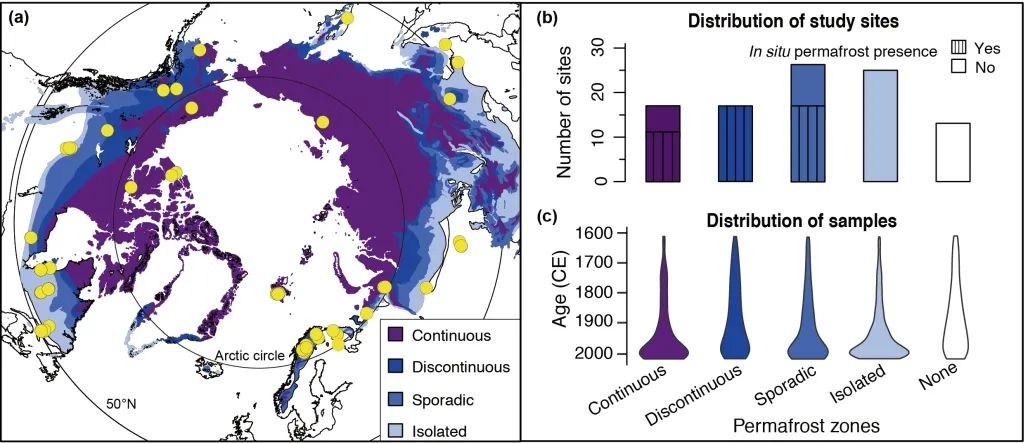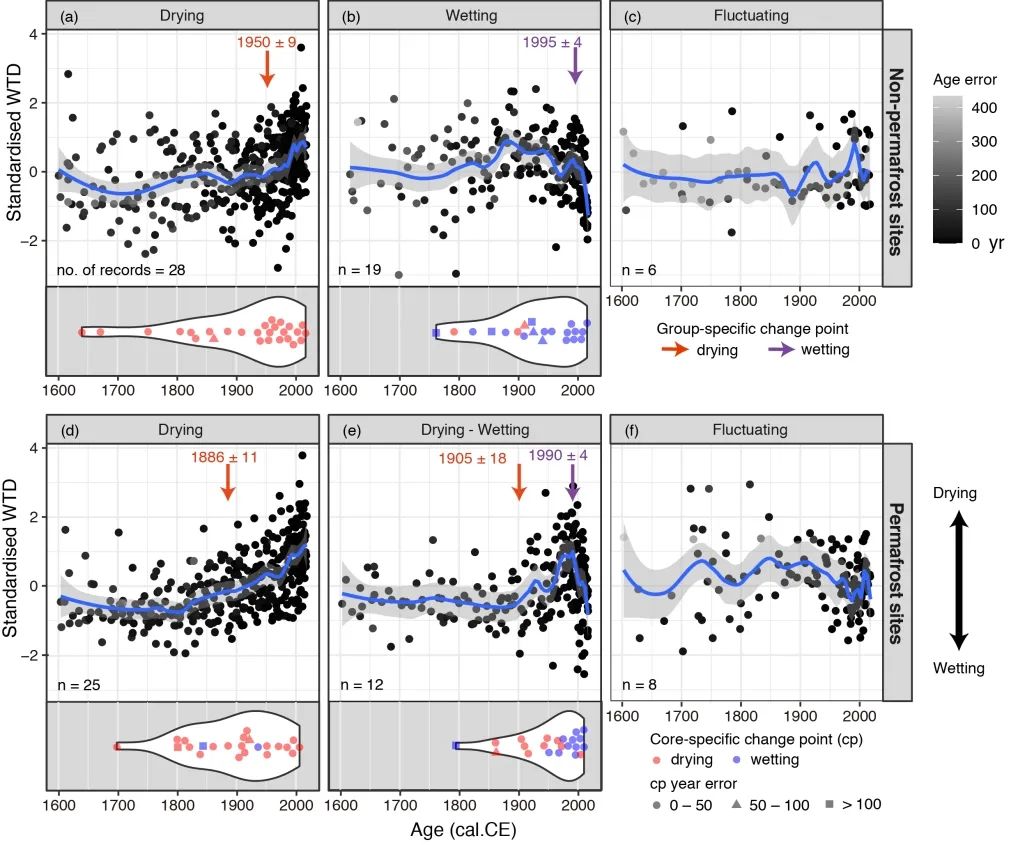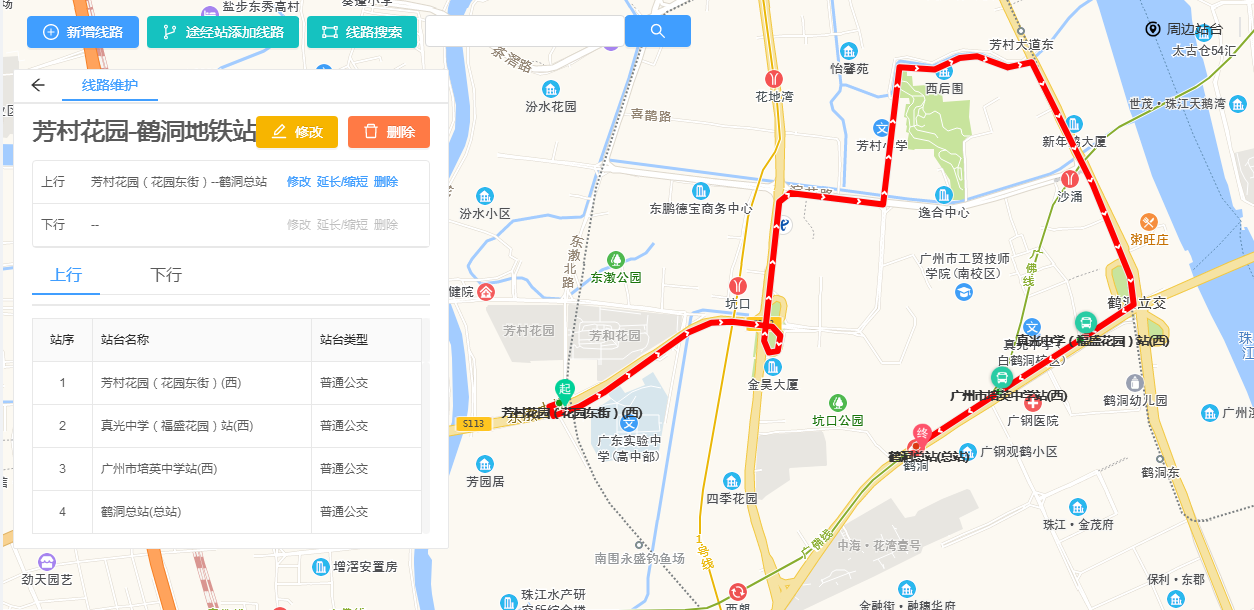Zhang Hui et al. -NC: Climate change causes dried or dampness of peat land?
Author:Institute of Geological Earth Time:2022.09.02


Peat land is an important terrestrial carbon library, which stored carbon contracts twice the global forest vegetation carbon reserves (Figure 1). Therefore, peat land plays a key role in regional environment and alleviating global climate change.
The anaerobic characteristics created by long-term flooding are the main reasons for the formation of huge carbon databases in peat land, and the water level of peat land is the most critical factor that determines its carbon absorption-release of net budget and climate feedback effect. However, the water level of peat land is suffered from various factors, such as precipitation, evaporation, surface runoff, frozen soil activity, and self -reliance, and it is difficult to accurately simulate predictions; this makes it in the context of climate change. Become the focus of attention in the academic world. Studying the law of the evolution of peat ground water level in the past can not only clarify the response law of peat water level changes to global climate change, but also provide accurate "historical similar types" for future peat water level simulation predictions.

Figure 1 Highweight peat land landscape. The picture on the right shows that the frozen soil causes the surface of peat ground to rise (left picture/Zhang Hui, the right picture/Sanna Piilo)
Associate Researcher Zhang Hui, Guo Zhengtang researcher, and associate researcher at the Key Laboratory of the Institute of Geology and Earth Physics at the Institute of Geology and Earth Physics of the Chinese Academy of Sciences. The change trend was systematically analyzed (Figure 2). By collecting peat drilling holes, they used AMS14C, 210PB, 137CS, volcanic ash and other annual methods to establish a high -precision age sequence of drilling holes. The shell transformers were rebuilt with water level evolution sequences with shell transformers. Under the influence of modern climate change, the evolution of the water level of peat land (northern peat land) in the mid -high latitude area.

Figure 2 Study sample distribution. Different backgrounds represent different frozen soil distribution bands
The results of the study show that in the past 400 years, the dry and humidity changes in peat land in the mid -high latitudes area mainly occurred since the end of the ice period. About 54%of them have significantly drying trends, and 32%have significantly wet dampness trends (Figure 3 ), The peat land distributed in frozen soil has a significant drying phenomenon before wetting. The beginning time of different research points has a significant difference in starting time.

Figure 3 (A-C) non-frozen soil and (D-F) frozen soil areas have evolved in Water-Table DEPTH (WTD) in the past 400 years. Each group of evolution types contain multiple drills with the same evolution trend. The blue curve and shadow are the overall changes in each group revealed by the LOESS model. The arrow indicates the time point of the wet and wet change of each group of the variable point detection and identification. The piano chart shows the dry and wet change time point of the single drilling hole contained in each group
In addition, through comparative water level changes and regional climate data, they also found climate change, especially in summer, temperature increases and peat water levels are closely related (Figure 4). For example, compared with other areas, the temperature increase in northeast Canada, and the phenomenon of dampness of peat land is also the most common (Figure 4A). In addition, the dry and wetness of peat land is closely related to its local ecological environmental factors and self -life processes. For example, in peat land distributed in frozen soil, climate change can indirectly affect the water level of peat ground by affecting frozen soil activities -frozen frozen frozen -frozen -frozen -frozen -frozen activity The formation of soil can cause the surface of peat floor (Figure 1 to right) to dry, and the melting of frozen soil can cause the peat floor to become damp.

Figure 4 The changes in the water level (WTD) of peat ground (WTD) compare the changes in the summer temperature (A, B), precipitation (C, D). The average value of the average value of the water level, temperature, and precipitation in the figure is 1963–2012 average and 1851–1900 average. In order to avoid the overlap of research points, the coordinate points of some areas have adopted a circular point displacement settings
This study reveals the sensitivity and response complexity of peat land to climate change; in the context of climate change, the water level of peat land can show multiple changes. It can be seen that under the influence of climate change in the future, the trend of changes in the fluctuations of peat floor water levels and its carbon source exchange process still has great uncertainty, and the results of the study show that clarifying the heterogeneity of peat land urgently needs to become future research. the key of.
研究成果发表于国际学术期刊Nature Communications(张卉*,Valiranta M*, Swindles G T, et al. Recent climate change has driven divergent hydrological shifts in high-latitude peatlands[J]. Nature Communications, 13: 4959. DOI: 10.1038/S41467-022-32711-4). Studies have been jointly funded by many domestic and foreign projects such as the National Natural Science Foundation of China (41888101).

Beautiful editor: Chen Feifei
School pair: Wanpeng
- END -
Fangcun Garden -Metro Hedong Station Rujo Line Open

I hope to open a contract passing through the surrounding schools in the Fangcun G...
Baoer Diary (926)

Grassy QingqingLight clouds嘹 嘹 嘹 嘹The sky is full of clear skyStunEverything i...